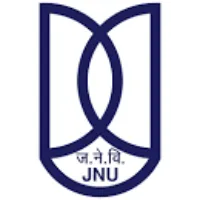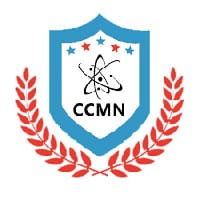Latest Applications Open 2024:
The JNU was properly known as Jawaharlal Nehru University, and it stands for the JNU Entrance Examination for candidates who are interested in getting admission to this university. It is a popular university in India in which many of the students may participate to complete their various courses. This Entrance Examination is held once a year.
In the different streams, different programs are provided by the university for candidates. Those who are aspiring to get admission can apply through online mode as per the given procedure of Admission. It offers a high level of education for candidates.
Through this article, the candidates will get detailed information on Jawaharlal Nehru University, which includes the JNU Syllabus, Courses, etc., for candidates.
JNU 2024 Syllabus
The Jawaharlal Nehru University Syllabus is provided below for candidates, and those candidates will pick the syllabus that will be helpful to better prepare for the exam. There are various syllabuses for various courses.
Section I- Technology/Engineering Stream
Part A – (Basic Engineering and Technology Pharmacology)
Latest Applications For Various UG & PG Courses Open 2024
-
- Parul University | Admissions Open for All Courses 2024. Apply Now
- Chandigarh University | Admissions Open for All Courses 2024. Apply Now
- NIIT | Admissions Open for All Courses 2024. Apply Now
- KL University | Admissions Open for All Courses 2024. Apply Now
- Alliance UG | Admissions Open for All Courses 2024. Apply Now
- GD Goenka | Admissions Open for All Courses 2024. Apply Now
Basic Engineering and Technology
Basic concepts/principles in mechanical engineering, electrical and electronics engineering:
Chemical Engineering
Computer applications in chemical engineering- chemical process industries instrumentation methods of chemical analysis- thermodynamics- stoichiometry- fluid dynamics- mechanical operations- heat and mass transfer operations- chemical kinetics/reaction engineering- process instrumentation dynamics and control- process equipment design.
Principles of Biochemical Engineering
Enzyme catalysis (Michaelis Menton Kinetics) and reactor design. Material & energy balances of fermentation processes. Kinetics of microbial growth and product formation (Monad Modelle-decking-Piret model). Nature of fermentation processes.
Transport phenomena in biochemical reactors- Mass transfer in immobilized enzyme systems and Oxygen transfer in the submerged fermentation process, examples of primary metabolites, secondary metabolites, and enzymes.
Pharmacology
Physiology, Pharmacology & Biochemistry
Basic physiology and biochemistry pertaining to all the systems in the body. Classification, mode of action, pharmacological effects, side effects, toxicity, and posology of drugs acting on the CNS, ANS, CVS, gastrointestinal system, endocrine system. Principles of chemotherapy, chemotherapeutic agents, anticancer drugs, vitamins, and minerals.
Industrial Pharmacy
Pharmaceutical processing – mixing, milling, drying, powder compression, clarification, filtration, Rheology, sterilization, sterility testing, disinfection, Pharmaceutical dosage forms: Formulation, manufacture, and evaluation of solid, semisolid, liquids, aerosols and parentals.
Chemistry of natural products, SAR and Chemistry of analgesics, anticancer, CVS drugs, drugs acting on the CNS, GIT, chemotherapeutic agents, vitamins, hormones.classification, identification, extraction, and isolation of active principles of commonly used medicinal plants.
Part B – (Physics, Chemistry, and Mathematics)
Mathematics
Calculus – Differential Equation- Complex numbers- Complex integration- Power series- Three Dimensional Geometry-Algebra.
Physics
Mechanics
Kinematics- Newton’s laws – work and mechanical energy- dynamics of rotary motion- fundamentals of the special theory of relativity- gravitation- motion in non-inertial frames.
Thermodynamics
Ideal gases- 1st law of thermodynamics- Kinetic theory of gases- 2nd law of thermodynamics -real gases.
Electricity and Magnetism
Electrostatics- Coulomb’s law- electric field potential- capacitance- dielectrics in an electric field- energy of an electric field- direct current- magnetic field of direct current- – electromagnetic induction.
Waves and Optics
Free harmonic oscillators- elastic waves- electromagnetic waves- interference, diffraction, scattering and polarization of light- thermal radiation.
Modern Physics
The structure of matter and basic solid-state physics – elementary nuclear physics- elementary quantum mechanics- the structure of the atom.
Chemistry
Inorganic Chemistry
Electronic structure of atoms, the periodic table, and periodic properties. General characteristics, structure, and reactions of non-transition elements and transition elements. Coordination compounds, structure, crystal field and ligand field theories, spectral and magnetic properties.
Organic Chemistry
Synthesis, reactions, and mechanisms of alkenes, alkynes, arenes, alcohols, phenols, aldehydes, ketones, carboxylic acids, and their derivatives, halides, nitro compounds and amines. Structure and properties of biomolecules, carbohydrates, amino acids, and proteins.
Physical Chemistry
Chemical equilibrium, first law, thermochemistry, second law and entropy, free energy, properties of dilute solutions, chemical kinetics, rates of reactions and factors affecting rates of reactions. Spectroscopy, principles of UV- visible and IR spectroscopy.
Part C – (Fundamentals of Life Sciences and Informatics)
Life Sciences
Organization of unicellular organisms, invertebrates, and vertebrates. Ultrastructure of plant and animal cells. Nucleic acids, protein synthesis, Mendelian genetics. Morphology of angiosperms. Biotechnology, Physiology.
Information Technology
Introduction to www. Networking: Basics-modem-hub-switch-commands to transfer file remote login. Elements of languages used on the Internet JAVA- Perl. Elements of databases- Relational databases.
Section II – Science Stream
Part A – Life Sciences
Biochemistry
Cell structure and function; protein synthesis; genetic code; DNA & RNA; carbohydrate, protein, and lipid metabolism; clinical biochemistry; In the born error of metabolism; hormones and their function.
Molecular biology & recombinant DNA technology
Properties of nucleic acids, chromosomes, DNA replication, damage and repair, gene manipulation, cloning vectors, gene libraries, screening of libraries, gene cloning, applications of recombinant DNA technology, PCR, RFLP, Western, Northern and Southern blotting.
Immunology
Cells of the immune system, lymphoid tissues, complement, antibodies, hybridoma technology, applications of monoclonal antibodies, antigen recognition, processing and presentation, cell-mediated immunity, cytokines, hypersensitivity, vaccine technology, autoimmunity, transplantation, immune responses to various infections, Immunotechnology.
Part B – (Physics and Chemistry)
Physics
Mechanics
Kinematics- Newton’s laws- work and mechanical energy- dynamics of rotary motion- fundamentals of the special theory of relativity- gravitation- motion in non-inertial frames.
Thermodynamics
Ideal gases – 1st law of thermodynamics- Kinetic theory of gases- 2nd law of thermodynamics real gases.
Electricity and Magnetism
Electrostatics- Coulomb’s law- electric field potential- capacitance- dielectrics in an electric field the energy of an electric field- direct current- magnetic field of direct current- electromagnetic induction.
Waves and Optics
Free harmonic oscillators- elastic waves- Electromagnetic waves- interference, diffraction, scattering and polarization of light- thermal radiation.
Modern Physics
The structure of matter and basic solid-state physics- elementary nuclear physics- elementary quantum mechanics- the structure of an atom.
Chemistry:
Inorganic Chemistry
Electronic structure of atoms, the periodic table, and periodic properties. General characteristics, structure, and reactions of known- transition elements and transition elements. Coordination compounds, structure, crystal field and ligand field theories, spectral and magnetic properties.
Organic Chemistry
Synthesis, reactions, and mechanisms of alkenes, alkynes, arenes, alcohols, phenols, aldehydes, ketones, carboxylic acids, and their derivatives, halides, nitro compounds and amines. Structure and properties of biomolecules, carbohydrates, amino acids, and proteins.
Physical Chemistry
Chemical equilibrium, first law, thermochemistry, second law and entropy, free energy, properties of dilute solutions. Chemical kinetics, rates of reactions and factors affecting rates of reactions. Spectroscopy, principles of UV-visible and IR spectroscopy.
Part C- (Mathematics, Computer and Information Sciences)
Mathematics
Vectors- Trigonometry- Differentiation & Integration- Matrices
Information Sciences
Introduction to www. Networking: Basics-modem-hub-switch-commands to transfer files remote login. Elements of languages used on the Internet JAVA- Perl. Elements of databases- Relational database.
Latest Applications For Various UG & PG Courses Open 2024
-
- Parul University | Admissions Open for All Courses 2024. Apply Now
- Chandigarh University | Admissions Open for All Courses 2024. Apply Now
- NIIT | Admissions Open for All Courses 2024. Apply Now
- KL University | Admissions Open for All Courses 2024. Apply Now
- Alliance UG | Admissions Open for All Courses 2024. Apply Now
- GD Goenka | Admissions Open for All Courses 2024. Apply Now
Computer Application
Basics of computers- hardware components of a computer. Operating systems- windows Linux- simple commands. Elementary Boolean arithmetic- subtraction- addition- multiplication. Applications- word processing- spreadsheets. Elementary basic programming commands and syntax.
If you have any queries regarding JNU Syllabus 2024, you can ask your query and leave comments below.

As a dedicated Biology Science graduate, I’m passionate about sharing the latest updates in national and state entrance exams through my blog. I aim to keep aspiring students informed about exam trends, important dates, and changes in syllabi. With a keen interest in education, I strive to offer valuable insights for students navigating the competitive landscape of entrance examinations and admission tests. Stay updated with me.

